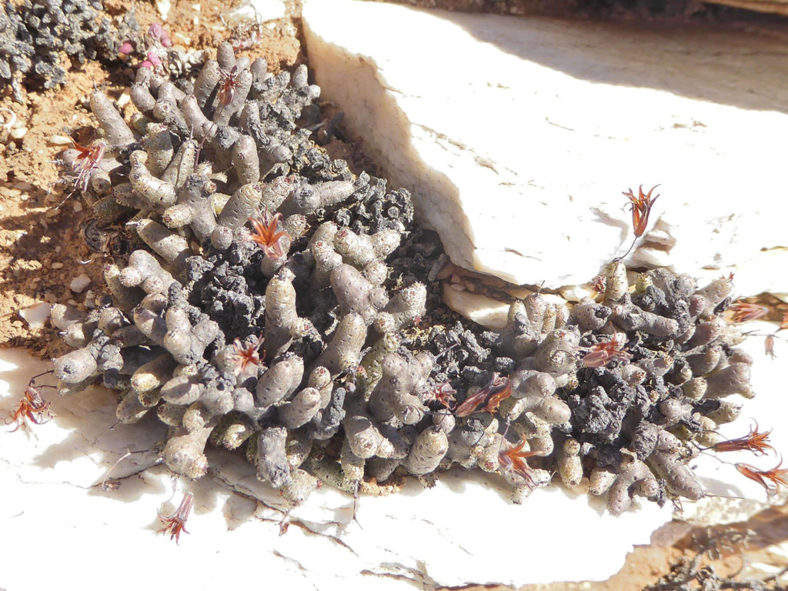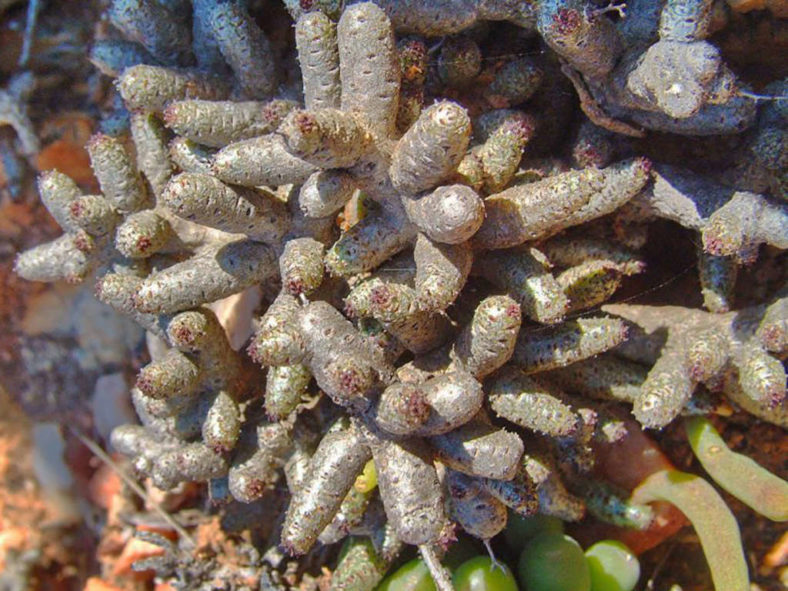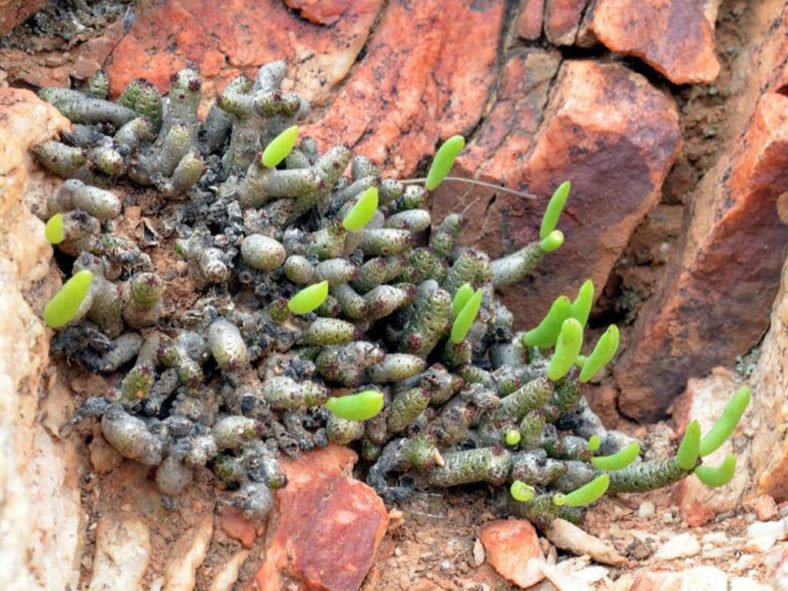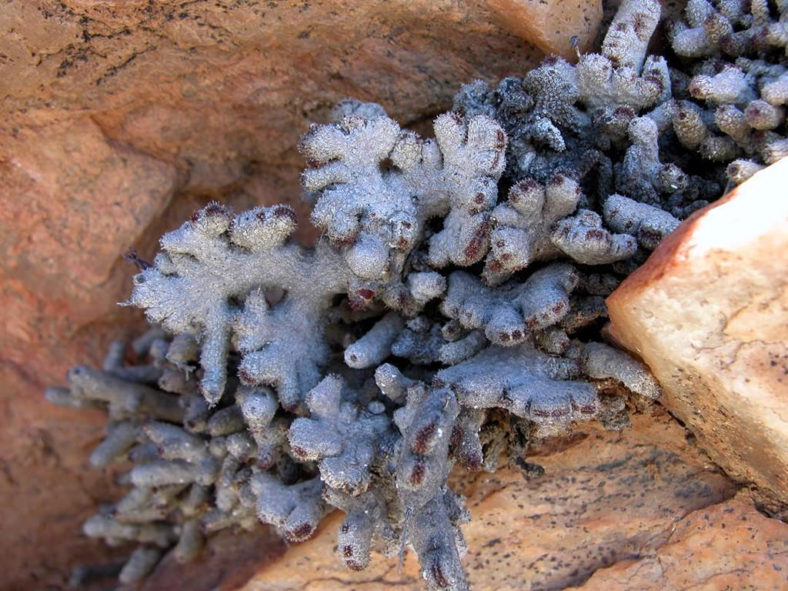Scientific Name
Tylecodon buchholzianus var. fasciculatus G.Will.
Common Name(s)
Naked Pork Butterbush
Synonym(s)
Tylecodon buchholzianus subsp. fasciculatus
Scientific Classification
Family: Crassulaceae
Subfamily: Kalanchoideae
Genus: Tylecodon
Etymology
The varietal epithet "fasciculatus (pronounced fas-sik-yoo-LAH-tus)" is a Latin adjective meaning "fasciculate, fasciculated, grouped in a bundle or cluster" and refers to the densely clustered branches.
Origin
The native range of Tylecodon buchholzianus var. fasciculatus is the Oograbies Mountains east of Port Nolloth, possibly elsewhere in the Richtersveld in the Northern Cape province of South Africa and southern Namibia. It grows in sheltered crevices on the eastern aspect of steep mountain slopes at elevations between 980 and 1,570 feet (300 and 480 m).
Description
Tylecodon buchholzianus var. fasciculatus is a small succulent that forms dense, spreading to drooping clusters of usually short branches with little or no leaves. The branches are whitish to gray-green, becoming greenish during winter. The leaves are green, almost cylindrical, very brittle, and soon deciduous.
The flowers are tubular, pale pink to red-purple, and appear on short petioles from mid-winter to late spring. They can reach up to 0.6 inches (1.5 cm) in length.

How to Grow and Care for Tylecodon buchholzianus var. fasciculatus
Light: This succulent can survive direct sunlight exposure without problems, but it will grow beautifully in partial shade.
Soil: A well-draining soil mix is key to a healthy T. buchholzianus var. fasciculatus. Poor drainage and overwatering cause root rot in both indoor and outdoor plants. Use pots with at least one drainage hole at the bottom.
Temperature: Like all Tylecodons, this succulent is highly tolerant when it comes to high temperatures and also tolerant of cold, frost-free conditions during the winter. T. buchholzianus var. fasciculatus can withstand temperatures as low as 35 °F (1.7 °C). USDA Plant Hardiness Zones 10b to 11b, 35 to 50 °F (1.7 to 10 °C).
Watering: As a winter grower, T. buchholzianus var. fasciculatus requires careful watering during winter and spring. Get the soil wet, and then wait until it is dry before watering again. In summer, reduce watering to once per month.
Fertilizing: Use liquid fertilizer for cacti and other succulents during winter.
Repotting: You do not need to repot this plant often. Repot when you see that the pot becomes too small or shallow.
Propagation: T. buchholzianus var. fasciculatus can be cultivated by seed or cuttings. Sow the seeds in fall and winter. The best time for taking cuttings is the fall.
Learn more at How to Grow and Care for Tylecodon.
Toxicity of Tylecodon buchholzianus var. fasciculatus
T. buchholzianus var. fasciculatus is adapted to avoid animal predation being poisonous. Therefore, keep it away from children, pets, and livestock.
Links
- Back to genus Tylecodon
- Succupedia: Browse succulents by Scientific Name, Common Name, Genus, Family, USDA Hardiness Zone, Origin, or cacti by Genus
Photo Gallery
Click on a photo to see a larger version.


